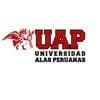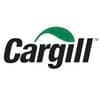Edad al primer parto y productividad lechera del ganado bovino Holstein en la costa central del Perú
El objetivo del estudio fue determinar el efecto de la edad al primer parto (EPP) sobre la producción estandarizada de leche (PEL) de la primera y segunda lactación e intervalo entre los primeros dos partos (IEP) en vacas Holstein de la cuenca lechera de Lima, Perú. Se analizaron registros de 4215 vacas provenientes de nueve establos, registrados en el Servicio de Productividad Lechera de la Universidad Nacional Agraria La Molina, entre enero de 2003 y diciembre de 2012. La información se analizó mediante estadística descriptiva y un modelo lineal mixto, utilizando el paquete SAS 9.4. La EPP promedio fue de 24.9 ± 2.3 meses. La EPP influyó en la PEL (p=0.0008), pero no en el IEP (p=0.3969). Asimismo, se encontraron diferencias significativas (p<0.01) entre las dos lactaciones, entre las cuatro estaciones del año y entre los 10 años evaluados, para las dos variables en estudio. En conclusión, se observaron mayores PEL y menores IEP a edades intermedias (22-30 meses), por lo que la EPP óptima estaría alrededor de los 22 meses para lograr maximizar el rendimiento productivo.
Palabras clave: edad al primer parto; producción de leche; intervalo entre partos; Holstein; costa central del Perú



1. Bailey T, Currin J. 2009. Heifer inventory and the economics of replacement rearing. Virginia Cooperative Extension, Virginia State University. Virginia, USA. 4 p. [Internet]. Available in: https://www.pubs.-ext.vt.- edu/content/dam/pubs_ext_-vt_edu/404/ 404-287/404-287_pdf.pdf
2. Bormann J, Wiggans GR, Gengler N, Druet T. 2002. Estimating effects of permanent environment, lactation stage, age and pregnancy on test-day yield. J Dairy Sci 85: 263-284. doi: 10.3168/ jds.S0022-0302(02)74076-9
3. Bouška J, Štípková M, Krejèová M, Bartoò L. 2007. The effect of growth and development intensity in replacement heifers on economically important traits of Holstein cattle in Czech Republic. Czech J Anim Sci 9: 277-283.
4. Clark R, Touchberry RW. 1962. Effect of body weight and age at calving on milk production in Holstein cattle. J Dairy Sci 45: 1500-1510. doi: 10.3168/jds.S0022- 0302(62)89662-3
5. Coffey MP, Hickey J, Brotherstone S. 2006. Genetic aspects of growth of Holstein-Friesian dairy cows from birth to maturity. J Dairy Sci 89: 322-329. doi: 10.3168/jds.S0022-0302(06)72097-5
6. Cooke JS, Cheng Z, Bourne NE, Wathes DC. 2013. Association between growth rates, age at first calving and subsequent fertility, milk production and survival in Holstein-Friesian heifers. Open J Anim Sci 3: 1-12. doi: 10.4236/ ojas.2013.31001
7. Evans RD, Wallace M, Garrick DJ, Dillon P, Berry DP, Olori V. 2006. Effects of calving age, breed fraction and month of calving on calving interval and survival across parities in Irish springcalving dairy cows. Livest Sci 100: 216- 230. doi: 10.1016/j.livprodsci.2005.09.003
8. Ettema JF, Santos JE. 2004. Impact of age at calving on lactation, reproduction, health, and income in firstparity Holsteins on commercial farms. J Dairy Sci 87: 2730-2742. doi: 10.3168/ jds.S0022-0302(04)73400-1
9. Hare E, Norman HD, Wright JR. 2006. Trends in calving ages and calving intervals for dairy cattle breeds in the United States. J Dairy Sci 89: 365-370. doi: 10.3168/jds.S0022-0302(06)72102-6
10. Heinrichs AJ. 1993. Raising dairy replacements to meet the needs of the 21st century. J Dairy Sci 76: 3179-3187. doi: 10.3168/jds.S0022-0302(93)77656-0
11. Heinrichs A, Jones C. 2017. Trends in age at calving of heifers in Pennsylvania. PennState Extension. Pennsylvania, EE.UU. 3 p. [Internet]. Available in: https://extension.psu.edu/trends-in-ageat-calving-of-heifers-in-pennsylvania
12. Hietanen H, Ojala M. 1995. Factors affecting body weight and its association with milk production traits in Finnish Ayrshire and Friesian cows. Acta Agr Scand A-An 45: 17-25. doi: 10.1080/ 09064709509410909
13. [ICBA] Israel Cattle Breeders Association. 2012. The dairy industry in Israel. Israel. [Internet]. Available in: http://www.icba-israel.com/cbase/ 2012.pdf
14. [KNRS] Koninklijk Nederlands Rundvee Syndicaat. 2005. Annual Statistics 2004. Coöperatie Rundveeverbetering Delta, Arnhem, The Netherlands.
15. Lin CY, McAllister AJ, Batra TR, Lee AJ, Roy GL, Vesely JA, Wauthy JM, et al. 1988. Effects of early and late breeding of heifers on multiple lactation performance of dairy cows. J Dairy Sci 71: 2735-2743. doi: 10.3168/jds.S0022- 0302(88)79867-7
16. Meyer M, Everett R, Van Amburgh M. 2004. Reduced age at first calving: effects on lifetime production, longevity and profitability, Arizona Dairy, EE.UU. [Internet]. Available in: http://www.- dairyweb.ca/Resources/USWebDocs/ FirstCalvingAge.pdf
17. Mohd Nor N, Steeneveld W, van Werven T, Mourits M, Hogeveen H. 2013. First-calving age and first lactation milk production on Dutch dairy farms. J Dairy Sci 96: 981-992. doi: 10.3168/ jds.2012-5741
18. Moore RK, Kennedy BW, Schaeffer LR, Moxley JE. 1991. Relationships between age and body weight at calving and production in first lactation Ayrshires and Holsteins. J Dairy Sci 74: 269-278. doi: 10.3168/jds.S0022-0302(91)78170-8
19. Muir B, Fatehi J, Schaeffer L. 2004. Genetic relationships between persistency and reproductive performance in first-lactation Canadian Holsteins. J Dairy Sci 87: 3029-3037. doi: 10.3168/ jds.S0022-0302(04)73435-9
20. Murray B. 2003. Balancing act – Research shows we are sacrificing fertility for production traits. Publ. 81-093. Ontario Ministry Agric. Food, Toronto, Canada. [Internet]. Available in: http://www.- omafra.gov.on.ca/english/livestock/
21. Pietersma D, Lacroix R, Lefebvre D, Cue R, Wade K. 2006. Trends in growth and age first calving for Holstein and Ayrshire heifers in Quebec. Can J Anim Sci 86: 325-336. doi: 10.4141/A05-080
22. Pirlo G, Miglior F, Speroni M. 2000. Effect of age at first calving on production traits and on difference between milk yield returns and rearing costs on Italian Hols-teins. J Dairy Sci 83: 603-608. doi: 10.3168/jds.S0022-0302(00)74919-8
23. Rokouei M, Torshimi R, Shahrbabak M, Sargolzaei M, Sorencen AC. 2010. Monitoring inbreeding trends and inbreeding depression for economically important traits of Holstein cattle in Iran. J Dairy Sci 93: 3294-3302. doi: 10.3168/ jds.2009-2748
24. Schneider MP, Strandberg E, Emanuelson U, Grandinson K, Roth A. 2007. The effect of veterinarytreated clinical mastitis and pregnancy status on culling in Swedish dairy cows. Prev Vet Med 80: 179-192. doi: 10.1016/ j.prevetmed.2007.02.006
25. Sejrsen K, Purup S, Vestergaard M, Foldager J. 2000. High body weight gain and reduced bovine mammary growth: Physiological basis and implications for milk yield potential. Domest Anim Endocrin 19: 93-104. doi: 10.1016/S0739-7240(00)00070-9
26. Sessarego EA, Vásquez AG, Tello VI. 2014. Evaluación del rendimiento reproductivo del ganado bovino lechero en el valle de Huaura. Spermova 4: 46-49.
27. Simerl NA, Wilcox CJ, Thatcher WW. 1992. Postpartum performance of dairy heifers freshening at young ages. J Dairy Sci 75: 590-595. doi: 10.3168/jds.S0022- 0302(92)77796-0
28. Thompson JR, Pollak EJ, Pelissier CL. 1983. Interrelationships of parturition problems, production of subsequent lactation, reproduction, and age at first calving. J Dairy Sci 66: 1119-1127. doi: 10.3168/jds.S0022-0302(83)-81909-2
29. Tozer PR, Heinrichs AJ. 2001. What affects the costs of raising replacement dairy heifers: A multiple- component analysis. J Dairy Sci 84: 1836-1844. doi: 10.3168/jds.S0022-0302(01)74623-1
30. Wall E, Brotherstone S, Woolliams JA, Banos G, Coffey MP. 2003. Genetic evaluation of fertility using direct and correlated traits. J Dairy Sci 86: 4093- 4102. doi: 10.3168/jds.S0022-0302(03)- 74023-5
31. Wathes DC, Brickell JS, Bourne NE, Swali A, Cheng Z. 2008. Factors influencing heifer survival and fertility on commercial dairy farms. Animal 2: 1135- 1143. doi: 10.1017/S1751731108002322
32. Wu JJ, Wathes DC, Brickell JS, Yang LG, Cheng Z, Zhao HQ, Xu YJ, Zhang S. 2012. Reproductive performance and survival of Chinese Holstein dairy cows. Anim Prod Sci 52: 11-19. doi: 10.1071/ AN11146
33. Zanton GJ, Heinrichs AJ. 2005. Metaanalysis to assess effect of prepubertal average daily gain of Holstein Heifers on first-lactation production. J Dairy Sci 88: 3860-3867. doi: 10.3168/jds.S0022- 0302(05)73071-X




Priya Chemicals









